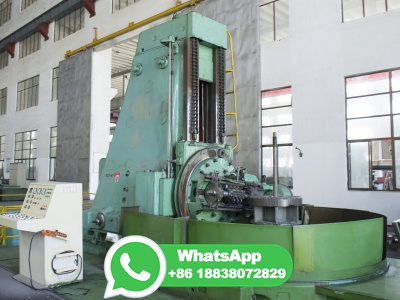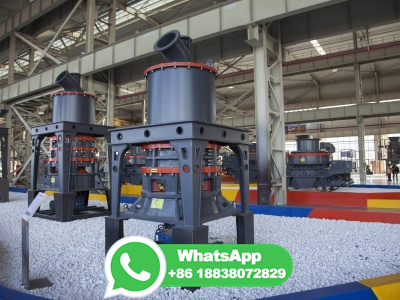
An adequate initial retentive force can be achieved with telpic crowns combining zirconia and FRC. ... used for the final milling step of the inner crown surface was adjusted for a tight initial fit in Group 1 (milling offset: +10 µm,, 2 × 10 µm = 20 µm lower inner diameter compared with the CAD file of the crown) and for improved ...
WhatsApp: +86 18037808511
Results: The mean fracture resistance of CADon crowns ( ± N) was significantly more than that of handlayered zirconia crowns ( ± N) (independent samples ttest, P < ). Cyclic fatigue resistance test results showed that the mean number of cycles before failure for handlayered zirconia crowns was 175,297 and for CADon crowns was 212,097 (MannWhitney U ...
WhatsApp: +86 18037808511
Advantages of CEREC MC X. Precise and fast, approximately 11 minutes for a crown, depending on material, design and process. Entire range of chairside treatment with up to 55 mm block size with small 6mm holder (from software ) including bridges and abutments. Implant surgery with costeffective surgical guides by Dentsply Sirona. 2 motors.
WhatsApp: +86 18037808511
Monolithic zirconia crowns fabricated by the CADCAM CEREC inLAB system and the LAVA system milling center showed MD values of less than 120 μm, which is within the clinically acceptable range. Peer Review reports Background
WhatsApp: +86 18037808511
Objective: Research on evaluation of crowns made by the latest contemporary dental computeraided design/computeraided manufacturing (CAD/CAM) systems for their marginal adaptation is scarce. The ...
WhatsApp: +86 18037808511
Purpose: To evaluate the marginal and internal fit of monolithic computeraided design/computeraided manufacturing (CAD/CAM) ZLS (Vita Suprinity) glass ceramic porcelain laminate veneers (PLVs), in terms of marginal and internal gap widths, in comparison to monolithic lithium disilicate (LDS) [IPS CAD] CAD/CAM veneers, and, also, to analyze the effect of incisal preparation designs ...
WhatsApp: +86 18037808511
Medically reviewed by: Dr. Rhonda Kalasho. CAD/CAM dentistry is dentistry, typically restorative dentistry, that uses CAD/CAM technology to create dental prostheses, like crowns, veneers, and dentures. CAD stands for computeraided design, and CAM stands for computeraided manufacturing. This technology was created by the manufacturing industry ...
WhatsApp: +86 18037808511
Name (s) in local language (s): Grube Nordstern, Herzogenrath, Aachen, NordrheinWestfalen, Deutschland. A former coal mine in Busch between Alsdorf and Merkstein, now Herzogenrath.
WhatsApp: +86 18037808511
Conclusion: Postmilling processing did not affect the internal adaptation of zirconiareinforced lithium silicate crowns fabricated with a chairside CAD/CAM technique. The new 3D computer technique for the evaluation of fit of restorations may be highly promising and has the opportunity to be applied to clinical studies.
WhatsApp: +86 18037808511
4 Answers. First make the cylinder as you had. Then in the midplane sketch a triangle and extrude cut all the way. Then use the array command and make the crown. No need for a 3d sketch. Thank you for your quick response. The only problem is Burger King crown is not symmetrical; see attached. I didn't know that.
WhatsApp: +86 18037808511
CADCAM zirconia has been in use inoffice and can be milled from soft blocks and sintered. Standard sintering takes 412 h to complete at 1450°C, speed sintering takes place at 1510°C for 30120 minutes, and highspeed sintering requires less than 30 minutes at temperatures around 1580°C [].Studies reported that highspeed sintering may affect the mechanical properties of 4YTZP specimens.
WhatsApp: +86 18037808511
Directly milling zirconia computeraided design (CAD)/computeraided manufacturing (CAM) crowns from fully sintered zirconia blocks using a fiveaxis laser milling system, compared...
WhatsApp: +86 18037808511
Methods: Thirty crowns were either (1) milled using a chairside Cerec MCXL unit from Cerec Zirconia Mono L (Dentsply Sirona), (2) milled using a LXO 5axis (Matsuura Machinery) industrial machine from Initial Zirconia HT (GC), or (3) 3Dprinted using an inkjet Carmel 1400 (Xjet) printer (n = 10).
WhatsApp: +86 18037808511
The conventional technique for the fabricating zirconia crowns is subtractive milling through computeraided design and computerassisted manufacturing (CAD/CAM). Although subtractive milling technique is a very reliable method, it has many drawbacks such as the high production costs, the wear of the milling burs, the amount of wasted material ...
WhatsApp: +86 18037808511
After scanning the working model, the design software is used to design the crown. The saved STL file is used on the CAD/CAM milling method and two types of 3D method to produce 10 ...
WhatsApp: +86 18037808511
A zirconia crown was designed by superimposing the prepreparation scan and the postpreparation scan of the abutment tooth. The design data were transferred to a 5axis milling machine, and the crown was milled from zirconia. The crown was luted using resin cement.
WhatsApp: +86 18037808511
Statement of problem: Information regarding the precision of monolithic zirconia crowns fabricated by using a standard computeraided design and computeraided manufacturing (CADCAM) workflow is available. However, information on the effect of a modified workflow using 3D laboratory scanning and/or cone beam computed tomography (CBCT) for monolithic zirconia crown fabrication is lacking.
WhatsApp: +86 18037808511
Fabrication of the Monolithic Zirconia Crowns. Six resin dies for each group were digitally scanned using the digital scanner (Ceramill® map 400; Amann Girrbach AG, Koblach, Austria), and they were used to design the zirconia crowns with the computerassisted designed (CAD) software (Ceramill® mind; Amann Girrbach AG, Koblach, Austria).
WhatsApp: +86 18037808511
This process could distort the original restoration design (CAD). The zirconia FDP adaptation hence depends on two production variables: the device's accuracy to fabricate the restoration and the 3Dcontrol of the sintering shrinkage [3]. The highest milling accuracy is yielded by fiveaxis milling devices in dental milling centers and ...
WhatsApp: +86 18037808511
Purpose:A range of materials for singletooth computeraided design and computeraided manufacturing (CADCAM) restorations have been introduced that may affect CAM accuracy. ... Evaluation of marginal and internal fit of lithium disilicate and zirconia allceramic CADCAM crowns using digital impressions: A systematic review. Ilser Turkyilmaz ...
WhatsApp: +86 18037808511
Computeraided design (CAD) and computeraided manufacturing (CAM) systems have been broadly used for fabricating crowns and have already appeared to be a valid alternative to traditional prosthetic fabrication methods.
WhatsApp: +86 18037808511
We present a protocol for the use of AI to fabricate implantsupported monolithic zirconia crowns (MZCs) cemented on customized hybrid abutments. ... design of the individual abutment and temporary crown using computeraided design (CAD) software; (3) milling of the zirconia abutment and the temporary polymethylmethacrylate (PMMA) crown, with ...
WhatsApp: +86 18037808511
Context: Discrepancies at the abutment/crown interface can affect the longevity of zirconia restorations. Aim: The aim was to evaluate the marginal and internal discrepancies (MD and ID) of zirconia copings manufactured by two milling systems with different finish lines. Materials and methods: Three aluminummasterdies (h = mm; Ψ = mm; 6), with different finish lines (large chamfer ...
WhatsApp: +86 18037808511
Another study evaluated zirconia and titanium abutments instead of CoCr and reported greater mean misfit values of to μm for the zirconia compared with the to μm of Tiabutments . Baldasarri et al. evaluated the microgap between conical connection implants and customized abutments (zirconia against titanium).
WhatsApp: +86 18037808511
Zirconia crowns and multiunit FDPs are predominantly made using computeraided designcomputer aided manufacturing (CADCAM). ... all the restorations were produced using CAMmilling, however, four intraoral scanners and several laboratory scanners were used. Also, nine different milling machines were named in the studies and five studies ...
WhatsApp: +86 18037808511